RETRACTED: The Exploration of Urban Material Anabolism Based on RS and GIS Methods: Case Study in Jinchang, China
Abstract
1. Introduction
2. Materials and Methods
2.1. Research Area
2.2. Methods and Data Sources
3. Results
3.1. Cumulative Case-City Metabolic Rate
3.2. Spatial Urban-Anabolism Pattern
3.3. Temporal Changes in Urban Anabolism
4. Discussion and Conclusions
Author Contributions
Funding
Acknowledgments
Conflicts of Interest
References
- Lu, D.; Yao, S.; Li, G.; Liu, H.; Gao, X. Comprehensive analysis of the urbanization process based on china’ s conditions. Econ. Geogr. 2007, 27, 883–887. [Google Scholar]
- Kennedy, C.; Hoornweg, D. Mainstreaming urban metabolism. J. Ind. Ecol. 2012, 16, 780–782. [Google Scholar] [CrossRef]
- Zhang, L.; Hu, Q. A critical review on material and energetic metabolism for urban ecosystem: Resource metabolism and its contents. J. Nat. Resour. 2011, 26, 1801–1810. [Google Scholar]
- Zhang, Y.; Yang, Z.; Yu, X. Ecological network and emergy analysis of urban metabolic systems: Model development, and a case study of four Chinese cities. Ecol. Model. 2009, 220, 1431–1442. [Google Scholar] [CrossRef]
- Commission, N.D.A.R. National New Urbanization Report (2016); China Planning Press: Beijing, China, 2017; Volume 1, pp. 3–23. [Google Scholar]
- Fang, C. The urbanization and urban development in China after the reform and opening-up. Econ. Geogr. 2009, 29, 19–25. [Google Scholar]
- Song, T.; Cai, J.; Ni, P.; Du, S.; Ding, Y. Review and prospects of urban metabolism research. Prog. Geogr. 2013, 32, 1650–1661. [Google Scholar]
- Sun, W.; Dong, G. The efficiencies and their changes of China’s resources-based cities employing dea and malmquist index models. Geogr. Res. 2010, 29, 2155–2165. [Google Scholar] [CrossRef]
- Qiao, B.; Fang, C.; Huang, J. The coupling law and its validation of the interaction between urbanization and ecoenvironment in arid area. Acta Ecol. Sin. 2006, 26, 2183–2190. [Google Scholar]
- Liu, J. Research on Resource-Based Cities’ Transition and Sustainable Development in China. Ph.D. Thesis, Central South University, Changsha, China, 6 January 2007. [Google Scholar]
- Qin, D. Research on the Sustainable Development of Resource-Dependent Cities Based on Ecological Cities’ Construction—A Case Study of Zhaoyuan City. Ph.D. Thesis, Ocean University of China, Qingdao, China, 9 June 2011. [Google Scholar]
- Xu, J.; Li, G.; Wang, Y. Review and prospect of resource-based city vulnerability in China and abroad. Resour. Sci. 2015, 37, 1266–1278. [Google Scholar]
- Guo, C.; Luo, L.; Ye, M. Empirical analysis of factors influencing the sustainable development of resource-based cities. China Popul. Resour. Environ. 2014, 24, 81–89. [Google Scholar]
- Wolman, A. The metabolism of cities. Sci. Am. 1965, 213, 179. [Google Scholar] [CrossRef] [PubMed]
- Broto, V.C.; Allen, A.; Rapoport, E. Interdisciplinary perspectives on urban metabolism. J. Ind. Ecol. 2012, 16, 851–861. [Google Scholar] [CrossRef]
- Bristow, D.N.; Kennedy, C.A. The energy for growing and maintaining cities. Ambio 2013, 42, 41–51. [Google Scholar] [CrossRef] [PubMed]
- Duan, N. Urban material metabolism and its control. Res. Environ. Sci. 2004, 17, 75–77. [Google Scholar]
- Ma, Q.; Huang, X.; Yu, S.; Chen, Y. Review on the resear ch of metabolism. J. Nat. Resour. 2007, 1, 141–152. [Google Scholar]
- Kennedy, C.; Pincetl, S.; Bunje, P. The study of urban metabolism and its applications to urban planning and design. Environ. Pollut. 2011, 159, 1965–1973. [Google Scholar] [CrossRef]
- Inostroza, L. Measuring urban ecosystem functions through ‘technomass’—A novel indicator to assess urban metabolism. Ecol. Indic. 2014, 42, 10–19. [Google Scholar] [CrossRef]
- Palmer, G. The flow of energy in an agricultural society. Sci. Am. 1971, 225, 116–133. [Google Scholar]
- Hanya, T.; Ambe, Y. A study on the metabolism of cities. In Science for Better Environment Proceedings of the International Congress on the Human Environment (HESC) Kyoto (1975); HESC: Tokyo, Japan, 1977; pp. 228–233. [Google Scholar]
- Kalma, J.D. The metabolism of a city: The case of Hong Kong. Ambio 1978, 7, 3–15. [Google Scholar]
- Sahely, H.R.; Dudding, S.; Kennedy, C.A. Estimating the urban metabolism of Canadian cities: Greater toronto area case study. Rev. Can. De Génie Civ. 2003, 30, 468–483. [Google Scholar] [CrossRef]
- Browne, D.; O’Regan, B.; Moles, R. Assessment of total urban metabolism and metabolic inefficiency in an irish city-region. Waste Manag. 2009, 29, 2765–2771. [Google Scholar] [CrossRef] [PubMed]
- Chen, S.; Chen, B. Network environ perspective for urban metabolism and carbon emissions: A case study of vienna, austria. Environ. Sci. Technol. 2012, 46, 4498–4506. [Google Scholar] [CrossRef] [PubMed]
- Huang, S.L.; Hsu, W.L. Materials flow analysis and emergy evaluation of Taipei’s urban construction. Landsc. Urban Plan. 2003, 63, 61–74. [Google Scholar] [CrossRef]
- Lee, C.L.; Huang, S.L.; Chan, S.L. Synthesis and spatial dynamics of socio-economic metabolism and land use change of Taipei metropolitan region. Ecol. Model. 2009, 220, 2940–2959. [Google Scholar] [CrossRef]
- Li, L. Reviews on the developmental progress of urban m etabolism research. J. Fujian For. Sci. Technol. 2011, 38, 161–167. [Google Scholar]
- Zhang, Y.; Yang, Z.; Yu, X. Evaluation of urban metabolism based on emergy synthesis: A case study for Beijing (China). Ecol. Model. 2009, 220, 1690–1696. [Google Scholar] [CrossRef]
- Zhang, Y.; Yang, Z. Eco-efficency of urban material metabolism: A case study of shenzhen. Acta Ecol. Sin. 2007, 27, 3124–3131. [Google Scholar] [CrossRef]
- Mehmood, A. On the history and potentials of evolutionary metaphors in urban planning. Plan. Theory 2010, 9, 63–87. [Google Scholar] [CrossRef]
- Kenway, S.; Gregory, A.; Mcmahon, J. Urban water mass balance analysis. J. Ind. Ecol. 2011, 15, 693–706. [Google Scholar] [CrossRef]
- Huang, S.L. Urban ecosystems, energetic hierarchies, and ecological economics of taipei metropolis. J. Environ. Manag. 1998, 52, 39–51. [Google Scholar] [CrossRef]
- Niza, S.; Rosado, L.; Ferrão, P. Urban metabolism: Methodological advances in urban material flow accounting based on the lisbon case study. J. Ind. Ecol. 2010, 13, 384–405. [Google Scholar] [CrossRef]
- Barles, S. Urban metabolism of paris and its region. J. Ind. Ecol. 2010, 13, 898–913. [Google Scholar] [CrossRef]
- Li, D.; Wang, R. Hybrid emergy-lca (heml) based metabolic evaluation of urban residential areas: The case of Beijing, China. Ecol. Complex. 2009, 6, 484–493. [Google Scholar] [CrossRef]
- Kibert, C.J.; Sendzimir, J.; Guy, B. Construction ecology and metabolism: Natural system analogues for a sustainable built environment. Constr. Manag. Econ. 2000, 18, 903–916. [Google Scholar] [CrossRef]
- Liu, J.; Wang, R.; Wang, Z.; Yang, J. Metabolism and driving forces analysis of chinese urban households. Acta Ecol. Sin. 2003, 23, 2672–2676. [Google Scholar]
- Jin, W.; Xu, L.; Yang, Z. Modeling a policy making framework for urban sustainability: Incorporating system dynamics into the ecological footprint. Ecol. Econ. 2009, 68, 2938–2949. [Google Scholar] [CrossRef]
- Li, F.; Zhang, Y.; Liu, G. Assessment of energy-based urban material metabolism. Environ. Sci. Technol. 2009, 32, 108–112. [Google Scholar]
- Liu, H.; Zhang, Y. Ecological network analysis of urban metabolism based on input-output table. Procedia Environ. Sci. 2012, 13, 1616–1623. [Google Scholar] [CrossRef]
- Li, Y.; Zhang, Y.; Yang, N. Ecological network model analysis of China’s endosomatic and exosomatic societal metabolism. Procedia Environ. Sci. 2010, 2, 1400–1406. [Google Scholar] [CrossRef]
- Zhang, Y.; Yang, Z.; Fath, B.D. Ecological network analysis of an urban water metabolic system: Model development, and a case study for Beijing. Sci. Total Environ. 2010, 408, 4702. [Google Scholar] [CrossRef]
- Bodini, A. Building a systemic environmental monitoring and indicators for sustainability: What has the ecological network approach to offer? Ecol. Indic. 2012, 15, 140–148. [Google Scholar] [CrossRef]
- Bodini, A.; Bondavalli, C.; Allesina, S. Cities as ecosystems: Growth, development and implications for sustainability. Ecol. Model. 2012, 245, 185–198. [Google Scholar] [CrossRef]
- Alberti, M.; Hutyra, L. Detecting carbon signatures of development patterns across a gradient of urbanization: Linking observations, models, and scenarios. In 5th Urban Research Symposium on Cities and Climate Change: Responding to An Urgent Agenda; World Bank: Marseille, France, 2009; pp. 125–126. [Google Scholar]
- Kleijn, R.; Huele, R.; Voet, E.V.D. Dynamic substance flow analysis: The delaying mechanism of stocks, with the case of pvc in sweden. Ecol. Econ. 2000, 32, 241–254. [Google Scholar] [CrossRef]
- Baker, L.A.; Hope, D.; Xu, Y.; Edmonds, J.; Lauver, L. Nitrogen balance for the central arizona–phoenix (cap) ecosystem. Ecosystems 2001, 4, 582–602. [Google Scholar] [CrossRef]
- Chen, J.L.; Wu, Y.Z.; Xu, B.G. Smart Growth and Regulation Mode of Land Use Planning; The Hong Kong Polytechnic University: Hong Kong, China, 2005; pp. 388–393. [Google Scholar]
- Chen, H.; Wang, X.; Guo, Z. Transformation of urban planning: Thoughts on incremental planning, stock-based planning, and reduction planning. China City Plan. Rev. 2016, 25, 26–31. [Google Scholar]
- Jin, Z.; Chen, L.; Jing, D. Green space system planning practices of multidimensional network construction in high-density areas under the coexistence trend of incremental planning and existing stock planning. In Green City Planning and Practices in Asian Cities; Springer: Berlin/Heidelberg, Germany, 2018. [Google Scholar]
- Guocheng, H. Stock urban planning and management in the perspective of institution design. Shanghai Urban Plan. Rev. 2015, 3, 16–19. [Google Scholar]
- Han, J.; Chen, W.-Q.; Zhang, L.; Liu, G. Uncovering the spatiotemporal dynamics of urban infrastructure development: A high spatial resolution material stock and flow analysis. Environ. Sci. Technol. 2018, 52, 12122–12132. [Google Scholar] [CrossRef]
- Charpentier, J. The changing metabolism of cities. J. Ind. Ecol. 2017, 11, 43–59. [Google Scholar]
- Li, Y.; Deng, H.; Shi, L. The connotation and study methods of urban sustainability. Ecol. Econ. 2015, 31, 20–26. [Google Scholar]
- Ma, Q.; Huang, X. Responses of metabolism during the process of land use change. Trans. CSAE 2008, 24, 6–11. [Google Scholar]
- Newman, P.W.G. Sustainability and cities: Extending the metabolism model. Landsc. Urban Plan. 1999, 44, 219–226. [Google Scholar] [CrossRef]
- Wang, H.; Chen, D.; Duan, H.; Yin, F.; Niu, Y. Characterizing urban building metabolism with a 4d-gis model: A case study in China. J. Clean. Prod. 2019, 228, 1446–1454. [Google Scholar] [CrossRef]
- Codoban, N.; Kennedy, C.A. Metabolism of neighborhoods. J. Urban Plan. Dev. 2008, 134, 21–31. [Google Scholar] [CrossRef]
- Cui, S.; Zhang, Y.; Zhou, J.; Lin, J.; Liu, Y. Research methods and outlook in the study of urban building metabolism. Ecol. Sci. 2011, 30, 359–367. [Google Scholar]
- Huo, T.F.; Cai, W.G.; Ren, H.; Feng, W.; Zhu, M.L.; Lang, N.N.; Gao, J.X. China’s building stock estimation and energy intensity analysis. J. Clean. Prod. 2019, 207, 801–813. [Google Scholar] [CrossRef]
- Kleemann, F.; Lederer, J.; Rechberger, H.; Fellner, J. Gis-based analysis of vienna’s material stock in buildings. J. Ind. Ecol. 2017, 21, 368–380. [Google Scholar] [CrossRef]
- Zhao, Z.; Zhou, X.; Fu, Q.; Wang, X. Method for extraction of building height information based on ZY-3 image. Remote. Sens. Land Resour. 2015, 27, 19–24. [Google Scholar]
- Zhang, B.; Wang, C.; Zhang, H.; Wu, F. A review on building extraction and reconstruction from sar image. Remote. Sens. Technol. Appl. 2012, 27, 496–503. [Google Scholar]
- Wang, J.; Guo, Q.; Zheng, G. Research on urban building height extraction from single satellite image. Bull. Surv. Mapp. 2012, 4, 15–17. [Google Scholar]
- Fu, Q.; Wu, B.; Wang, X.; Sun, Z. Building extraction and its height estimation over urban areas based on morphological building index. Remote. Sens. Technol. Appl. 2015, 30, 148–154. [Google Scholar]
- Trexler, J.C.; Travis, J. Nontraditional regression analyses. Ecology 1993, 74, 1629. [Google Scholar] [CrossRef]
- Howarth, R.J. A history of regression and related model-fitting in the earth sciences (1636?-2000). Nat. Resour. Res. 2001, 10, 241–286. [Google Scholar] [CrossRef]
- Sharma, S.; Swayne, D.A.; Obimbo, C. Trend analysis and change point techniques: A survey. Energy Ecol. Environ. 2016, 1, 123–130. [Google Scholar] [CrossRef]
- Jacoby, W.G. Loess: A nonparametric, graphical tool for depicting relationships between variables. Elect. Stud. 2000, 19, 577–613. [Google Scholar] [CrossRef]
- Min, A.J.; Young, J.K.; Seok, Y.D.; Dong-seok, S. Verification of water environment monitoring network representativeness under estuary backwater effects. Environ. Monit. Assess. 2018, 190, 463. [Google Scholar]
- Borkowf, C.B.; Albert, P.S.; Abnet, C.C. Using lowess to remove systematic trends over time in predictor variables prior to logistic regression with quantile categories. Stat. Med. 2003, 22, 1477–1493. [Google Scholar] [CrossRef] [PubMed]
- Ruckstuhl, A.F.; Jacobson, M.P.; Field, R.W.; Dodd, J.A. Baseline subtraction using robust local regression estimation. J. Quant. Spectrosc. Radiat. Transf. 2001, 68, 179–193. [Google Scholar] [CrossRef]
- Lee, J.W.; Jhun, M.; Kim, J.Y.; Lee, J. An optimal choice of window width for lowess normalization of microarray data. OR Spectr. 2008, 30, 235–248. [Google Scholar] [CrossRef]

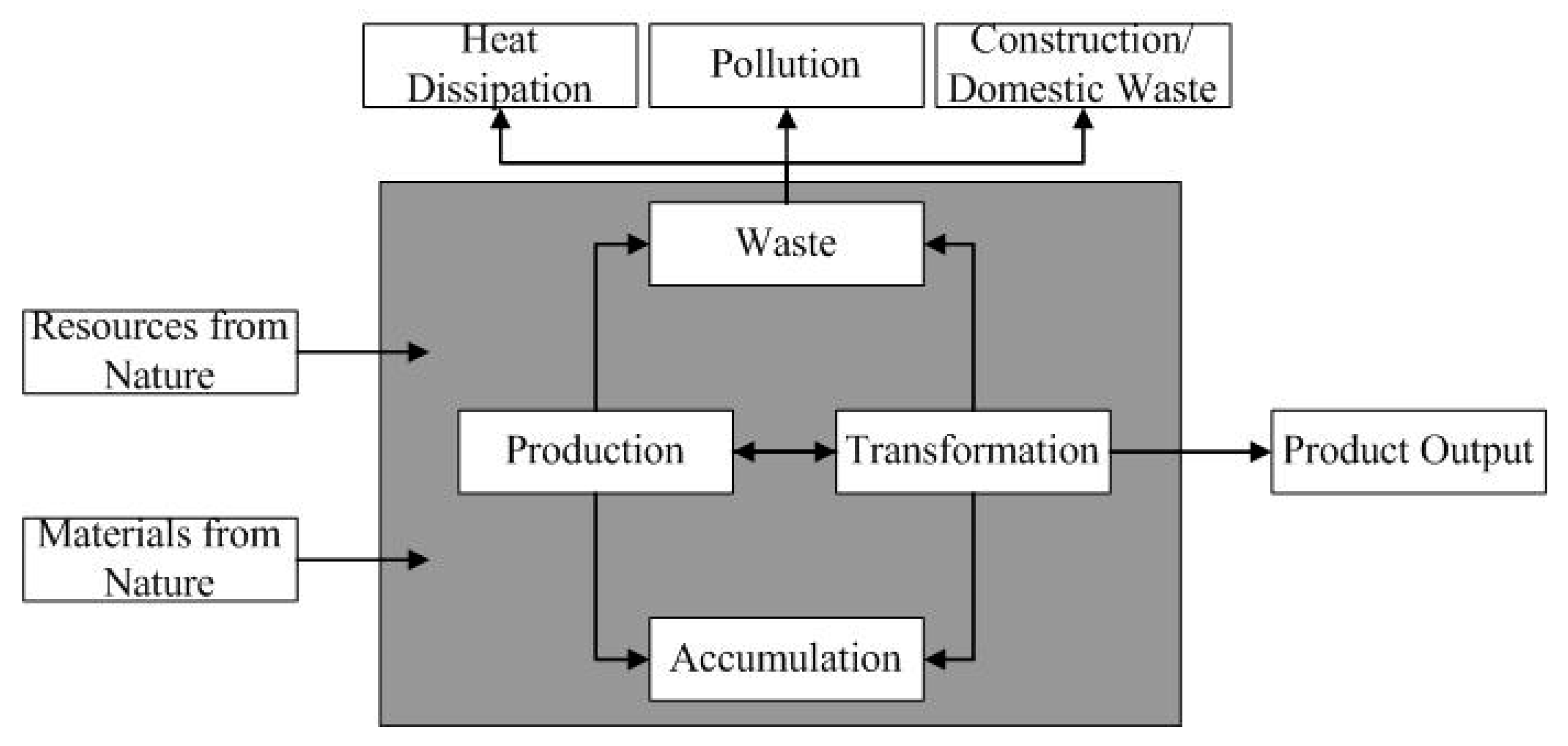
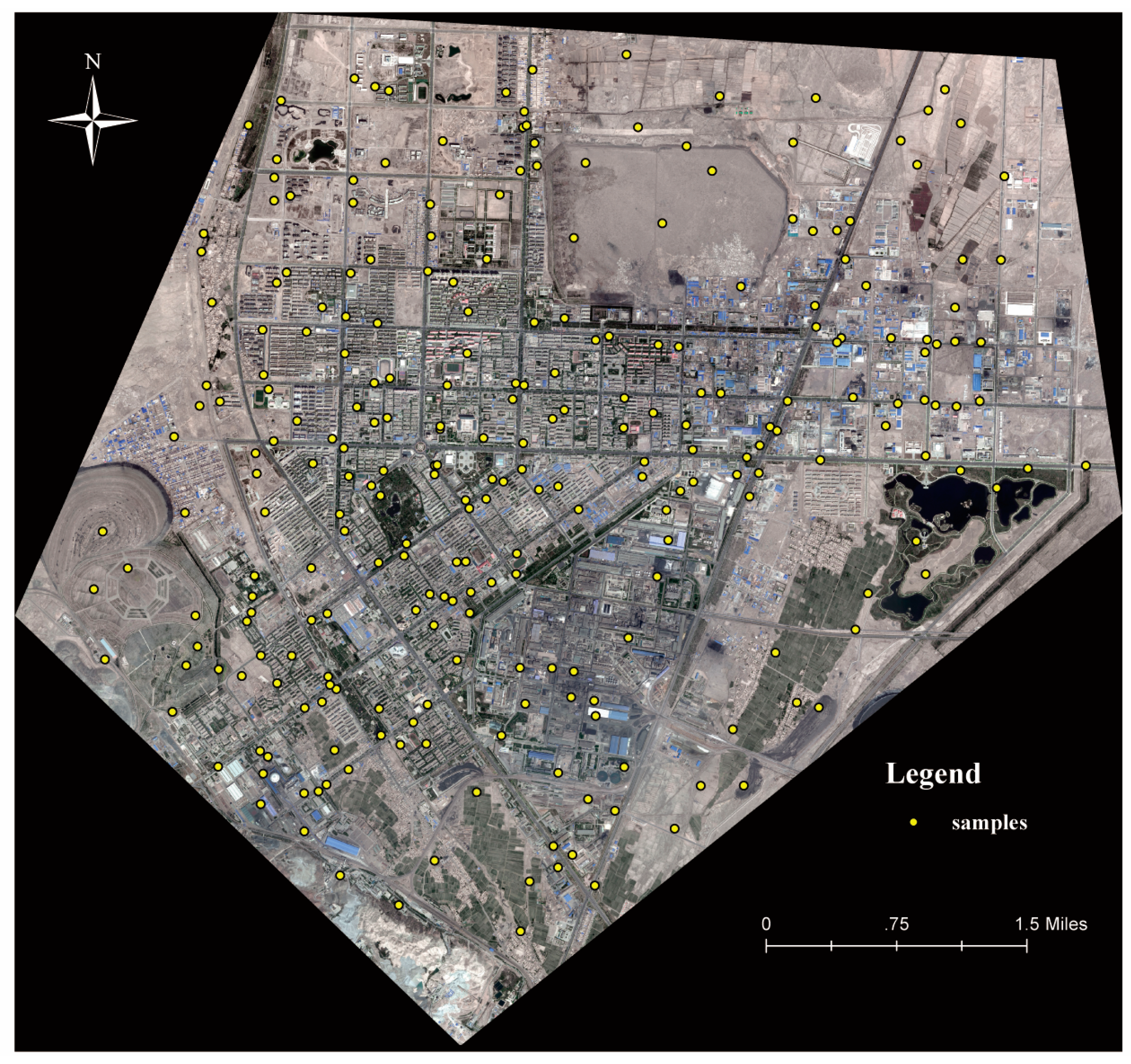



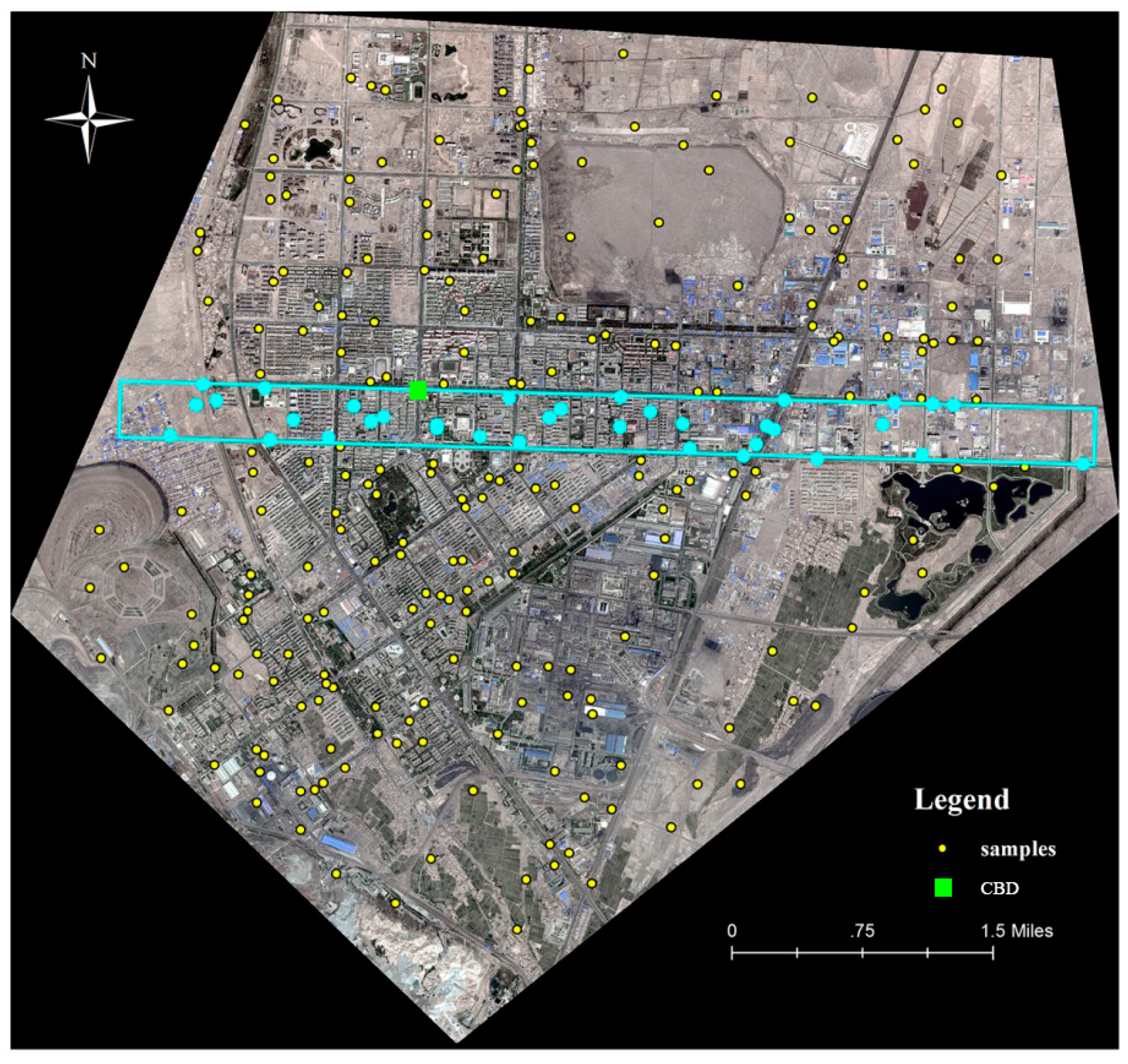


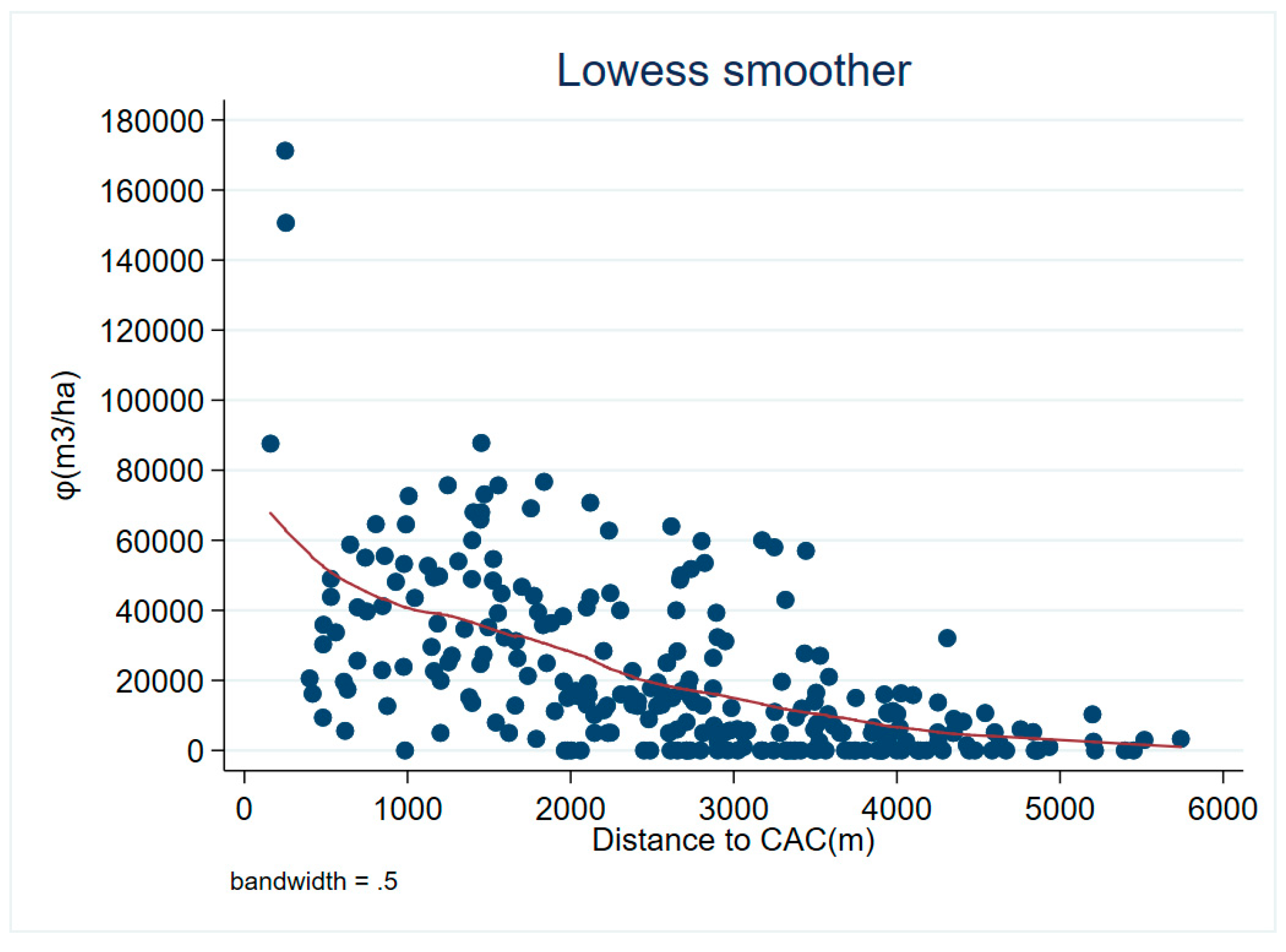
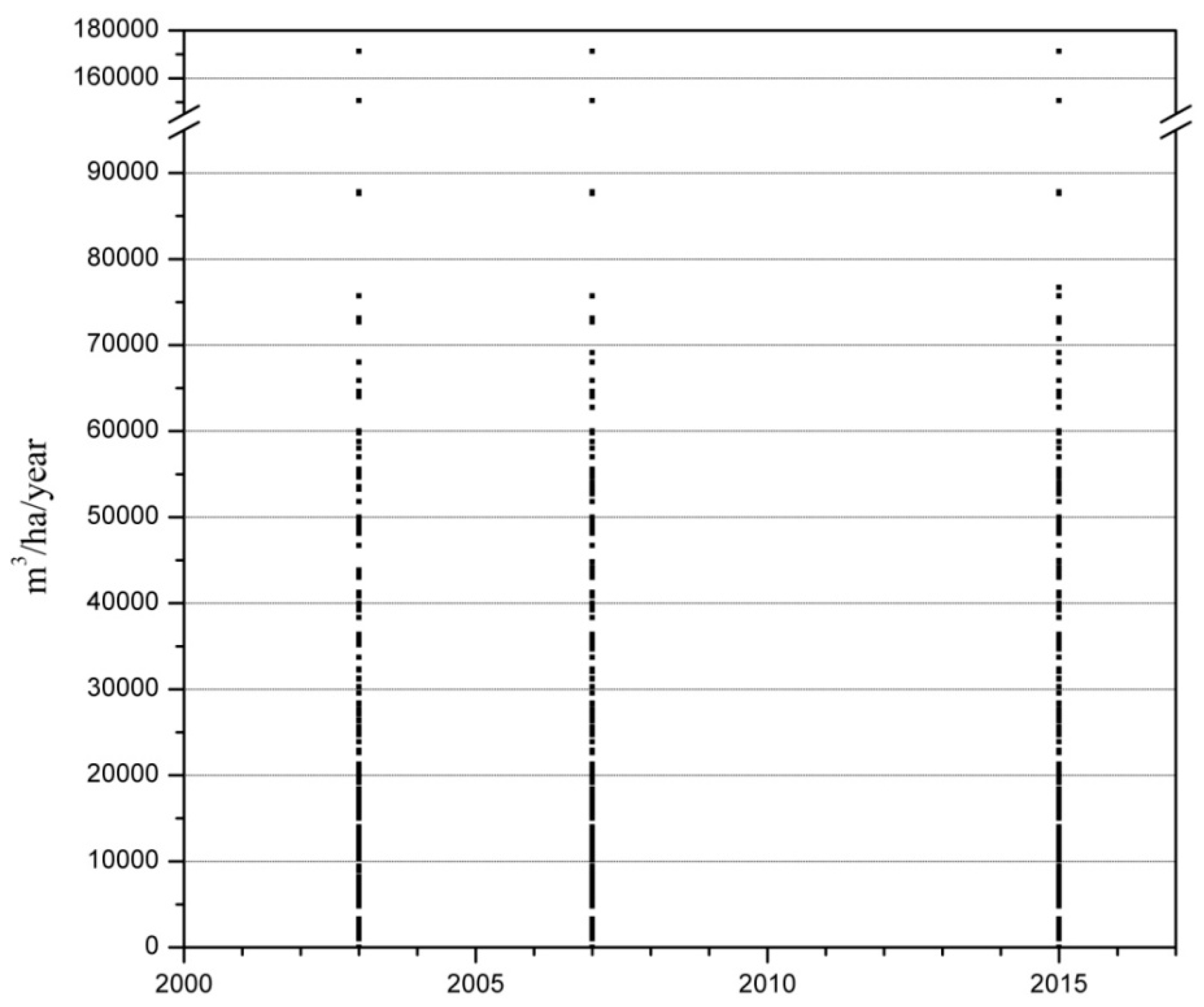
| N | Min | Max | AVG | Std | Skewness | Kurtosis | |||
|---|---|---|---|---|---|---|---|---|---|
| Statistics | Statistics | Statistics | Statistics | Statistics | Statistics | SE * | Statistics | SE | |
| φ (m3/ha) | 260 | 0 | 171,244.28 | 21,204.50 | 24,583.75 | 2.08 | 0.15 | 7.26 | 0.30 |
| Effective N | 260 | ||||||||
| Samples | Average | Min | Max |
|---|---|---|---|
| Circular (all) | 21,204.5046 | 1000 | 171,244.28 |
| Circular transect | 35,529.15501 | 2500 | 171,244.28 |
| Total average | 28,366.83 | 1750 | 171,244.28 |
| Samples | 2003 | 2007 | 2015 |
|---|---|---|---|
| Cumulative metabolic rate (m3/ha/year) | 393,756.776 | 441,009.298 | 459,430.933 |
| Accumulated metabolism (m3/ha) | 4,725,081.313 | 5,292,111.574 | 5,513,171.197 |
© 2020 by the authors. Licensee MDPI, Basel, Switzerland. This article is an open access article distributed under the terms and conditions of the Creative Commons Attribution (CC BY) license (http://creativecommons.org/licenses/by/4.0/).
Share and Cite
He, S.; Chen, X.; Zhang, Z.; Wang, Z.; Hu, M. RETRACTED: The Exploration of Urban Material Anabolism Based on RS and GIS Methods: Case Study in Jinchang, China. Remote Sens. 2020, 12, 370. https://doi.org/10.3390/rs12030370
He S, Chen X, Zhang Z, Wang Z, Hu M. RETRACTED: The Exploration of Urban Material Anabolism Based on RS and GIS Methods: Case Study in Jinchang, China. Remote Sensing. 2020; 12(3):370. https://doi.org/10.3390/rs12030370
Chicago/Turabian StyleHe, Shuqi, Xingpeng Chen, Zilong Zhang, Zhaoyue Wang, and Mengran Hu. 2020. "RETRACTED: The Exploration of Urban Material Anabolism Based on RS and GIS Methods: Case Study in Jinchang, China" Remote Sensing 12, no. 3: 370. https://doi.org/10.3390/rs12030370
APA StyleHe, S., Chen, X., Zhang, Z., Wang, Z., & Hu, M. (2020). RETRACTED: The Exploration of Urban Material Anabolism Based on RS and GIS Methods: Case Study in Jinchang, China. Remote Sensing, 12(3), 370. https://doi.org/10.3390/rs12030370







